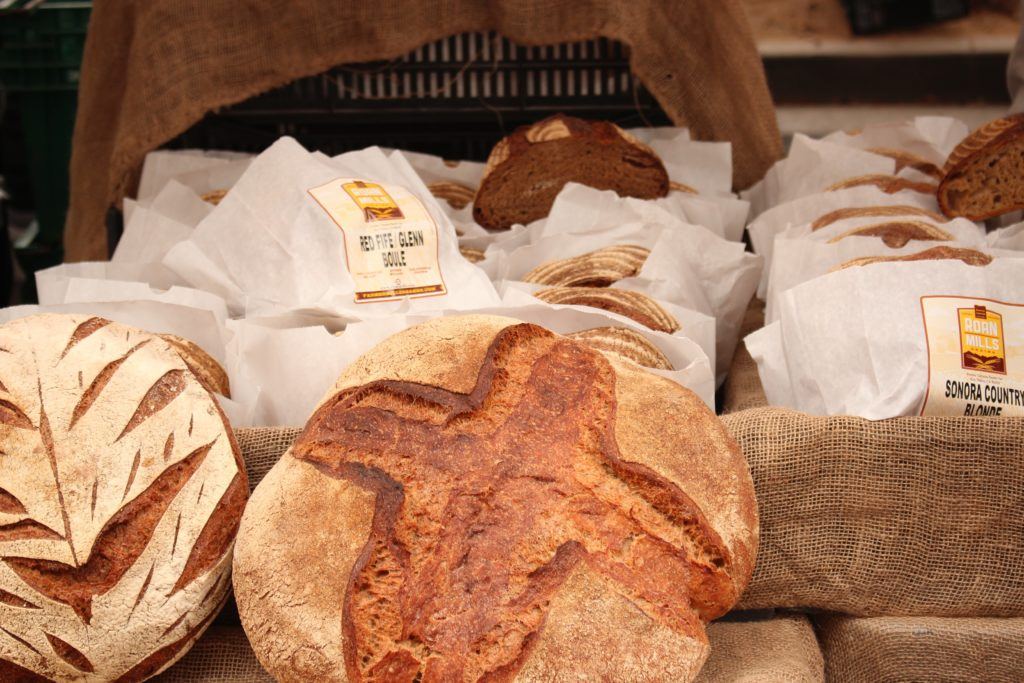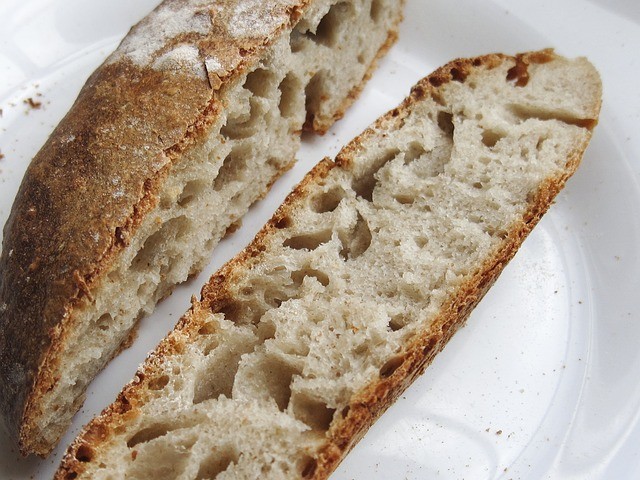Ah, sourdough; so soft and sweet with that delicious bite at the end.
Buying sourdough at the market is the simple way to sate your cravings, but there’s nothing better than a freshly baked loaf.

Additionally, making your own sourdough can help save on costs and guarantees you of its quality. No wondering if the label is hiding something and no having to settle for less-than-best with a cheaper brand.
Here is a sourdough recipe that can easily be made by hand or in a bread machine, with a unique starter that’ll have it tasting even more fantastic.
With this at your fingertips, your only worry is pacing yourself.
Contents
How To Make a Sourdough Starter
Materials
- Flour.
- Purified or filtered warm water.
- A glass or plastic container.
- A coffee filter or paper towel.
Starting Your Sourdough Starter
There are some recipes that will call for the use of commercial, or instant, yeast, but allowing the wild yeast to build on its own within your starter will provide a better taste and quality.
As you’re still using yeast, the start will rise and grow. Make sure your container is big enough to accommodate that or plan on switching to a larger one later on.
Mix together the flour and warm water in equal parts in your container, stir well, and let it sit out in a warm spot. You can fiddle with the levels of flour and water if needed, especially if you live in a humid or dry climate.
If your home is often cold, use a lamp for consistent warm light, but check to see if its within 70-85° F.
Temperature is key for making your starter. Cover the top of your container with the coffee filter or towel, and let it sit for 12-24 hours.

You should see bubbles forming on the top of your starter within 12-24 hours. Once you see bubbles, feed the starter by adding the same amount of water and flour you originally used, doubling it.
Stir it again until everything is combined and let it sit out for another 12-24 hours, until you see bubbling on the top of the surface. Secure your coffee filter or towel back on top of your container.
Now split your starter in half. You can toss out the other half, but you can also just grab another container. (However, if you do this for every time you split your starter, you will need many, many containers.)
Feed your starter the same way you did before by doubling the recipe, and let it sit for another 12-24 hours. Repeat this process of splitting and doubling for about a week and your starter should have enough wild yeast and bacteria in it for a tasty starter.
Before you use it, always check to see if there’s any odd colouring, such as orange or pink spots. Throw it out if it does, as it’s not the kind of bacteria you want to be consuming.
Your sourdough starter should have a pleasant smell and will get stronger the more you use it. Always refrigerate between uses.
Caring for Your Sourdough Starter
A starter can’t be forgotten in the back of your fridge. It needs to be split and fed at least once a week.
When you feed it, you can lower the amount of water you use, as a thicker starter will hold on to the yeast better.
If you know can’t take care of your starter, spread out a thin layer on a piece of wax paper, let it dry, and break it into flakes.
Store it in an airtight container, and it should keep for a couple months. Add ½ cup of water to every ¼ cup of sourdough starter flakes.

Baking Your Sourdough Bread
Materials
- Your starter.
- Your choice of flour.
- Salt.
- Water
The ratio of flour and your starter should have your starter at about 2/3 the size of the flour you’re using. If you plan on using 3 cups of flour, use 2 cups of your starter.
The amount of water should be about 1/3 to 1/2 the amount of your flour. In the previous example, you’d use a little less than 1 ½ cups of water.
The more absorbent your flour of choice is, the more water you should use. Make sure your bread dough is nice and moist.
Anywhere from a dash to a pinch or two should be good, but it all depends on the size of your loaf.
Sourdough Bread Method
Mix your salt, flour, and starter together. Then add your water and knead your dough by hand for approximately 20-25 minutes, or until your dough holds its shape.
Grease your pan, set your dough inside of it, and cover it with a damp towel. Let it sit to rise for the next 4 to 12 hours.
You can let it rise again for better quality by pushing down the dough and letting it sit for another allotted time.
Cut an “X” shape on the top of the bread with a sharp knife and Bake at 400° F until the internal temperature of the bread reaches about 200° F.
And there you have it! Sourdough, fresh and delicious – and you never had to leave home!
Here’s a video showing the benefits of Sourdough bread.
Have you tried making your own sourdough bread or starter?
